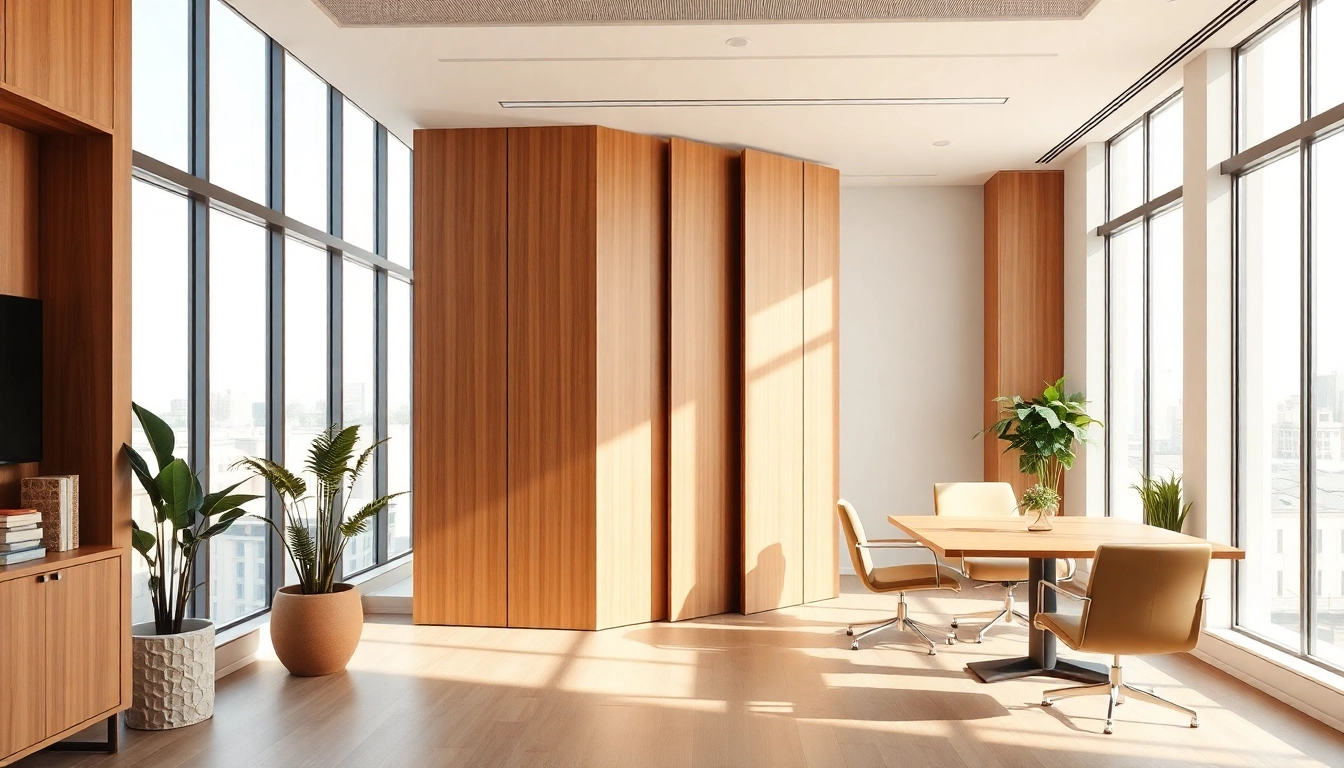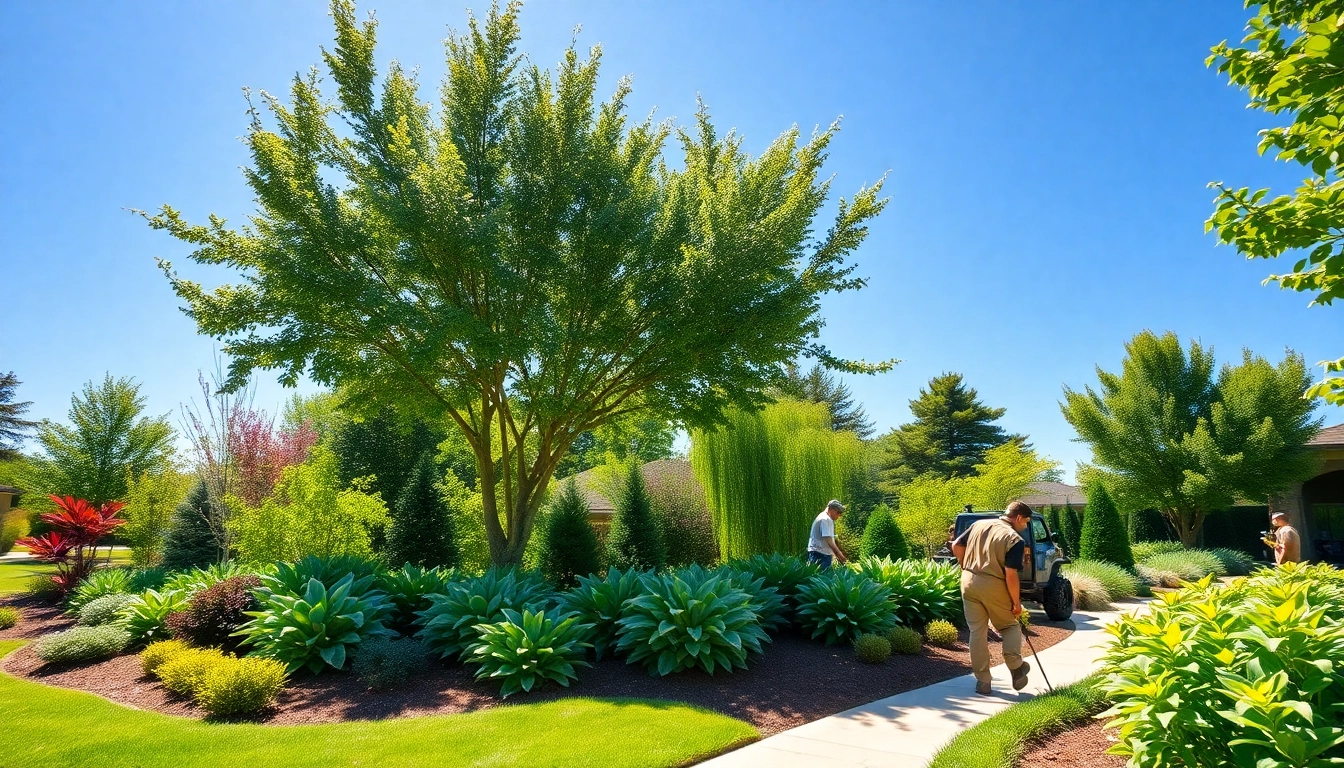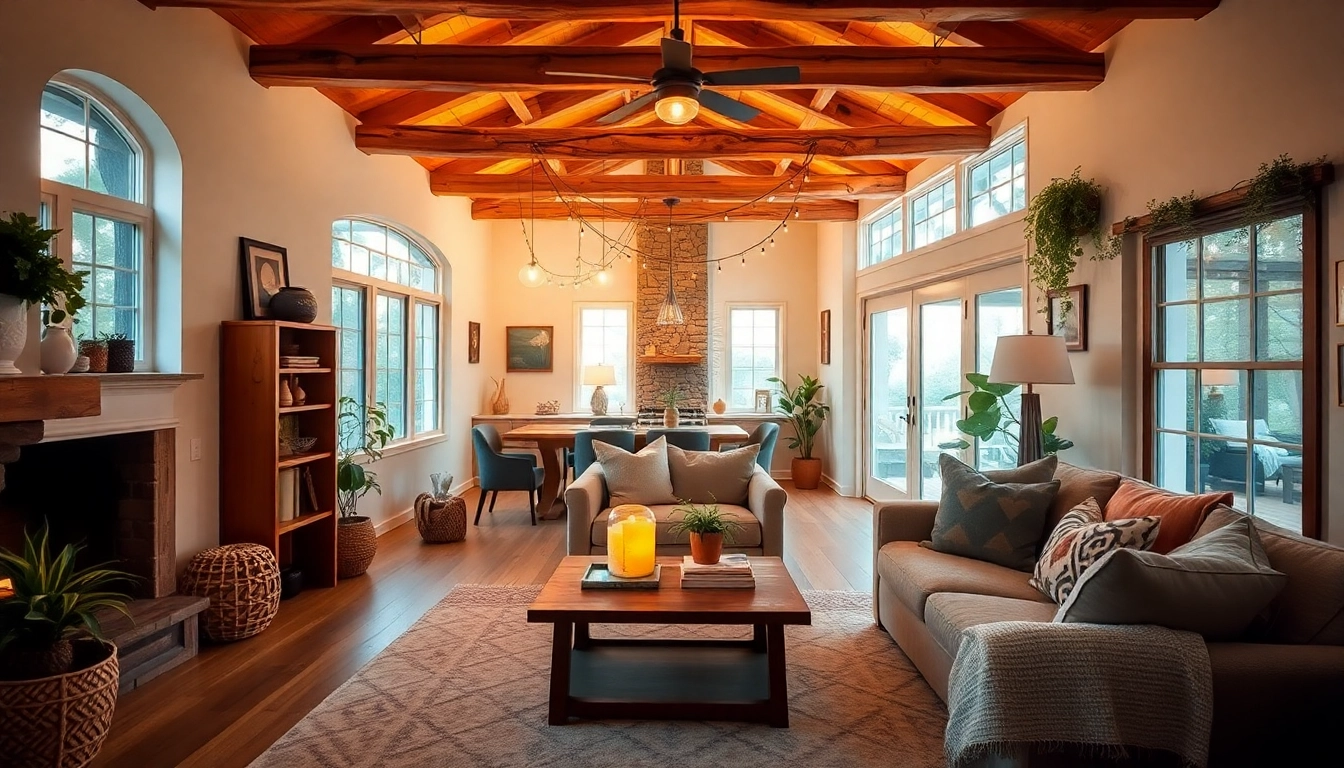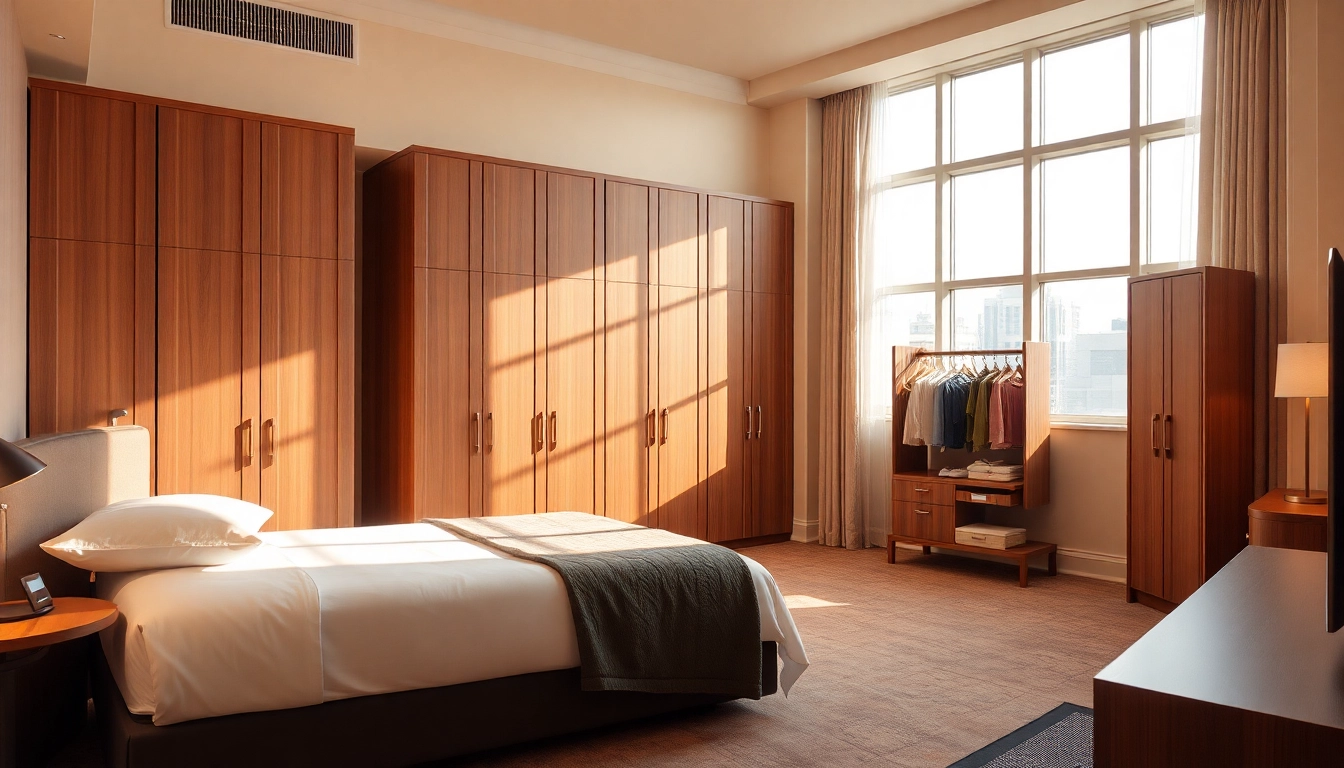Understanding Folding Partition Walls
What is a Folding Partition Wall?
A Folding Partition Wall is a versatile and functional architectural solution designed to separate spaces quickly and efficiently. These walls often consist of a series of interconnected panels that can be folded or collapsed to create various room configurations. Originally designed for commercial applications, folding partition walls have increasingly found their way into residential environments, enabling homeowners to maximize their living space or create temporary rooms for guests and other uses.
Benefits of Folding Partition Walls
The benefits of folding partition walls extend far beyond merely dividing space. Here are some key advantages:
- Flexibility: Folding partition walls can be easily reconfigured to adapt to different activities, allowing for maximum versatility in space usage. This flexibility is particularly appealing in environments like conference centers, classrooms, and homes.
- Space Savings: Traditional walls can restrict layouts, but folding partitions take up minimal space when stored. This feature allows for expansive open areas that can be adapted as needed.
- Acoustic Control: Many folding partitions are designed to provide sound insulation, making them ideal for environments where noise reduction is necessary, such as offices and recording studios.
- Cost-Effective: Compared to constructing permanent walls, installing folding partitions can be more budget-friendly and less time-consuming, making them an attractive option for immediate needs.
- Stylish Options: Folding partitions come in various materials, finishes, and styles, allowing for seamless integration into any decor, enhancing the aesthetics of both residential and commercial spaces.
Common Uses in Residential and Commercial Settings
Folding partition walls have diverse applications, each tailored to meet specific functional and design needs in both residential and commercial settings:
- Residential: In homes, these walls can serve to create temporary guest rooms, home offices, or play areas, adapting spaces to meet changing needs. Their ability to blend into existing decor while providing functionality is a significant advantage for homeowners.
- Commercial: The corporate world utilizes folding partitions to create breakout areas in open-plan offices, facilitating collaborative work and privacy as required. Additionally, educational institutions benefit from their capacity to transform large halls into multiple classrooms or event spaces.
Types of Folding Partition Walls
Material Options for Folding Partition Walls
Folding partition walls can be constructed from various materials, each offering unique benefits:
- Fabric: Commonly used for lightweight partitions, fabric panels are inexpensive and suitable for soft divisions that don’t require sound insulation.
- Wood: Solid wood partitions provide a classic aesthetic and can offer better soundproofing, making them suitable for conference rooms and offices.
- Glass: Glass folding partitions offer a modern touch while maintaining an open feel in the space. They are often used in upscale offices and homes to allow natural light while separating areas.
- Metal: Metal partitions lend a robust and contemporary look, ideal for industrial settings, and are usually more durable against wear and tear.
Acoustic vs. Non-Acoustic Folding Partitions
When choosing folding partition walls, understanding the difference between acoustic and non-acoustic options is vital:
- Acoustic Partitions: Designed to minimize sound travel between spaces, these walls are essential for environments where privacy is necessary. They are typically utilized in offices, conference rooms, and multi-purpose venues.
- Non-Acoustic Partitions: While these partitions may not significantly reduce sound, they effectively create visual barriers. These are often suitable in residential settings or situations where sound does not impact functionality.
Customizable Features and Style Choices
Customization options for folding partition walls enable the creation of tailored solutions for varying aesthetics and functionality:
- Colors and Finishes: From vibrant hues to understated tones, the choice of color and finish can help a folding partition blend into the environment or serve as a statement piece.
- Size and Configuration: Partition walls can be designed to fit specific measurements and shapes, accommodating unique space requirements in different contexts.
- Additional Features: Options such as integrated doors, windows, and electronic mechanisms for ease of operation can enhance overall user experience and satisfaction.
Installing Folding Partition Walls
Professional Installation vs. DIY
The installation process for folding partition walls can be approached through either professional services or as a DIY project:
- Professional Installation: Hiring professionals ensures optimal results, particularly in commercial settings where adherence to building regulations and precise acoustic performance may be a concern. They also bring expertise in integrating the partitions into the existing layout.
- DIY Installation: For homeowners looking to save costs, DIY installation might be viable if sufficient skill and experience exist. However, this approach necessitates a thorough understanding of the precise fitting and alignment requirements to ensure functionality and durability.
Key Considerations During Installation
Several key factors should be kept in mind during the installation process:
- Framework: Assess the structure of the building and ensure that the framework can support the weight and functionality of the partition.
- Height and Width: Measure the space accurately to ensure that the partition will function effectively without obstruction.
- Access to Power Sources: For partitions with electric mechanisms or integrated lighting, consider the placement of power outlets.
Maintenance Tips for Longevity
Proper maintenance of folding partition walls is crucial for ensuring their durability and effectiveness:
- Regular Cleaning: Dust and debris can accumulate in the tracks and hinges, so regular cleaning helps maintain smooth operation.
- Lubrication of Moving Parts: To avoid wear and tear, applying appropriate lubricant to hinges and tracks ensures easy opening and closing.
- Inspection of Seals: Periodically check the seals and corners for wear and other issues, addressing repairs promptly to avoid larger problems in the future.
Folding Partition Wall Applications
How to Use in Various Environments
The versatility of folding partition walls means they can be utilized in diverse environments effectively:
- Offices: Separating collaborative and quiet areas enhances productivity by allowing employees to choose their preferred work environment.
- Events: For conferences and exhibitions, these walls can create breakout rooms, making large venues more functional and accommodating.
- Education: In schools, folding partitions can convert large spaces into classrooms to serve diverse group sizes and functions.
Case Studies of Successful Implementations
Examining specific instances of folding partition wall implementations can highlight their effectiveness:
- Corporate Office: A multinational corporation employed folding partitions to create dynamic workspaces in a large open-plan layout. Employees appreciated the ability to adjust their surroundings based on the task at hand, resulting in improved morale and productivity.
- Community Center: A local community center deployed folding walls to facilitate multi-purpose coding classes. This adaptability allowed them to manage different group sizes and activities simultaneously.
Innovative Ideas for Room Division
There are creative ways to use folding partition walls that move beyond traditional separation:
- Art Installations: Use decorative folding partitions as mobile art installations that can redefine space while providing functionality.
- Sustainable Solutions: Utilizing eco-friendly materials in folding partition design that marry aesthetics with environmental responsibility.
- Integrated Technology: Designing partitions that integrate screens and audiovisual technologies for dynamic presentations and interactive collaboration.
Choosing the Right Folding Partition Wall for Your Needs
Assessing Your Space Requirements
To choose the right folding partition wall, carefully assess specific space requirements:
- Purpose: Identify the primary use of the partition. Is it for privacy, sound control, or aesthetic appeal?
- Size and Layout: Measure the area thoroughly and consider the dimensions of available walls and ceilings to determine ideal partition size and configuration.
- Aesthetic Preferences: Decide on the visual aspects that align with your existing decor and personal style.
Cost Considerations and Budgeting
Understanding the financial implications of installing folding partition walls is crucial:
- Initial Investment: Evaluate the costs of the partition material, installation, and any customization features.
- Long-Term Savings: Consider the potential for energy savings, as flexible spaces can reduce the need for heating and cooling over time.
- Maintenance Costs: Include potential maintenance expenses in your budgeting process to ensure that the partition remains functional and visually appealing long-term.
Finding Reputable Suppliers and Installers
Finally, selecting the right suppliers and installers is vital for achieving high-quality results:
- Research Providers: Look for reviews and ratings online, seeking suppliers with proven records of quality service and products.
- Request Quotes: Contact multiple providers for quotes and ask questions about materials, installation techniques, and timelines.
- Verify Credentials: Ensure that the installers are certified and experienced in handling the specific type of folding partition chosen.



